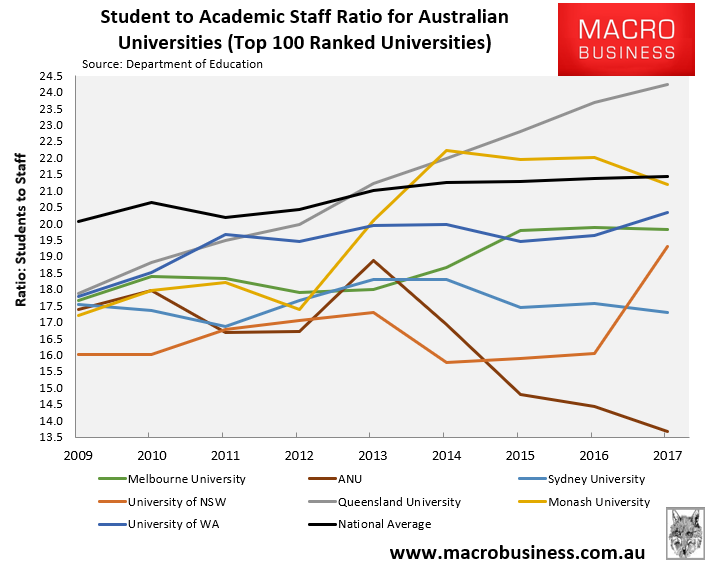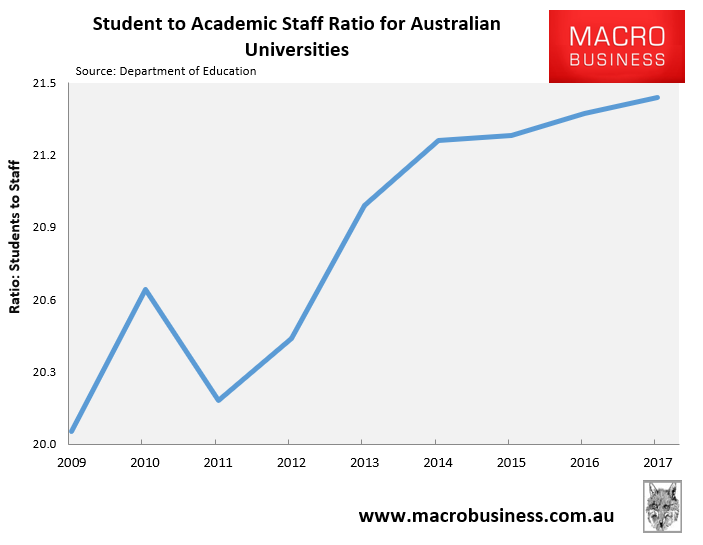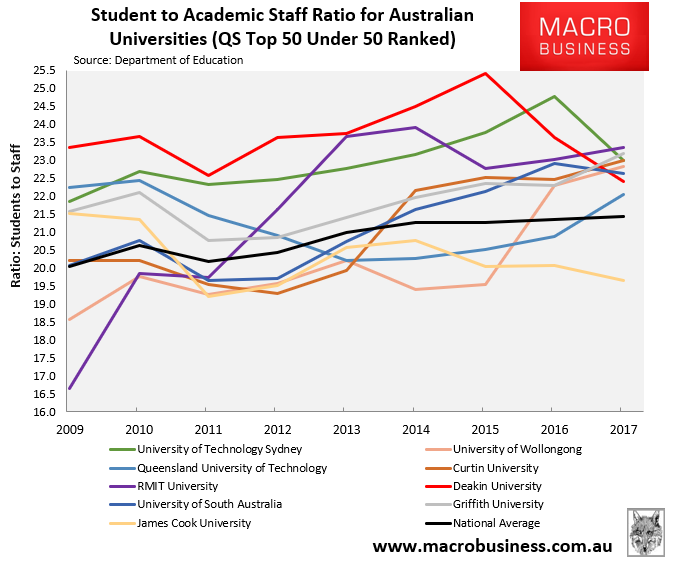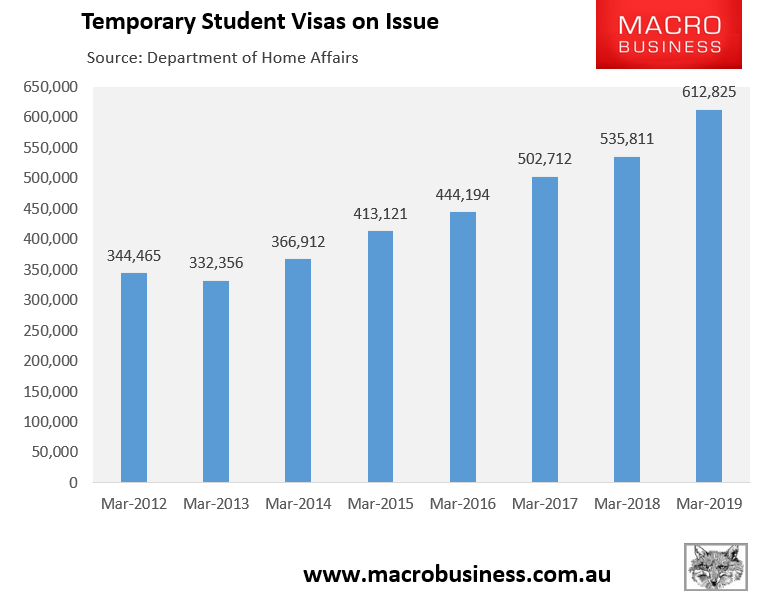Last month, the QS World University Rankings were released, which revealed that seven Australian universities were ranked in the top 100, specifically:
- Australian National University (29);
- Melbourne University (38);
- Sydney University (42);
- University of New South Wales (43);
- Queensland University (47);
- Monash University (58); and
- University of Western Australia (86).
As we noted at the time, five of these seven institutions – Queensland University, Monash University, University of Western Australia, Melbourne University and University of New South Wales – experienced a material increase in the ratio of students to academic (teaching) staff since 2009, as shown in the next chart, which other things equal suggests that education quality has badly degraded:

In fact, this same phenomenon has occurred across Australia’s university system, with the student to academic staff ratio increasing from an average of 20.05 to 21.44 between 2009 and 2017:

Earlier this week, the QS Top 50 Under 50 rankings were released, which compares global universities that are less than 50 years old. These ranked 10 Australian institutions in the top 50 globally:
Australia has the most universities in the QS Top 50 Under 50 rankings 2020 but last year’s top performer, the University of Technology Sydney, slipped out of the top 10, now sitting at 11th.
The rankings of universities less than 50 years old, released yesterday, also show the University of Wollongong (steady at 16) and Queensland University of Technology (steady at 19) in the top 20.
The others are Curtin University (21), RMIT University (22), Deakin University (29), University of South Australia (30), Griffith University (37) and James Cook University (48)…
The universities are evaluated according to research impact, capacity to nurture employable graduates, academic reputation, faculty-student ratio, and levels of internationalisation.
However, like their globally ranked older peers listed above, six out of these nine Under 50 universities have also experienced a material rise in their student to academic staff ratios – namely University of Technology Sydney; University of Wollongong; Curtin University; RMIT University; University of South Australia; and Griffith University:

Moreover, all but James Cook University had ratios that were above the national average in 2017.
The general worsening of the student to academic staff ratios is worrying in light of the rapid increase in international student numbers, which have nearly doubled since 2013:

Most of these international students are from Non-English Speaking Backgrounds and generally require more teaching assistance than domestic students. Therefore, the bigger student loads, alongside the higher maintenance of these students, implies a significant erosion in teaching capacity and quality across Australia’s university system.
If a quality educational experience is what students are seeking, they should be sceptical about studying at any of the Under 50 ranked universities other than James Cook University, as well as Queensland University. Each of these universities had student-to-staff ratios above the national average in 2017.
At the other end of the spectrum, the Australian National University and Sydney University have the lowest student-to-staff ratios, and therefore look like safer bets for students seeking quality.
That said, all of the top-100 universities presented above, other than Queensland University, have lower student-to-staff ratios than the national average. This suggests their quality is generally superior to the younger and second tier universities.

